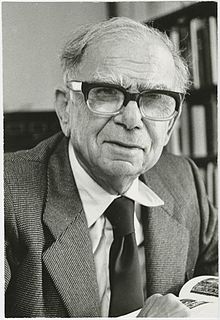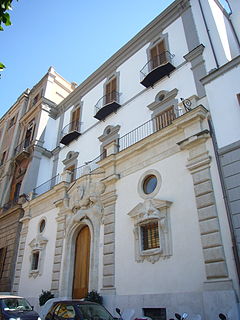Related Research Articles

Erwin Panofsky was a German-Jewish art historian, whose academic career was pursued mostly in the U.S. after the rise of the Nazi regime.

Sebastiano Serlio was an Italian Mannerist architect, who was part of the Italian team building the Palace of Fontainebleau. Serlio helped canonize the classical orders of architecture in his influential treatise variously known as I sette libri dell'architettura or Tutte l'opere d'architettura et prospetiva.

GiacomoBarozzida Vignola, often simply called Vignola, was one of the great Italian architects of 16th century Mannerism. His two great masterpieces are the Villa Farnese at Caprarola and the Jesuits' Church of the Gesù in Rome. The three architects who spread the Italian Renaissance style throughout Western Europe are Vignola, Serlio and Palladio. He is often considered the most important architect in Rome in the Mannerist era.

Antonio da Sangallo the Elder was an Italian Renaissance architect who specialized in the design of fortifications.

Gian Paolo Lomazzo was an Italian painter, best remembered for his writings on art theory, belonging to the second generation that produced Mannerism in Italian art and architecture.

Max Dvořák was a Czech-born Austrian art historian. He was a professor of art history at the University of Vienna and a famous member of the Vienna School of Art History, employing a Geistesgeschichte methodology.

Richard Krautheimer was a 20th-century art historian, architectural historian, Baroque scholar, and Byzantinist.

The Palazzo Mattei di Giove is the most prominent among a group of Mattei houses that forms the insula Mattei in Rome, Italy, a block of buildings of many epochs.

The Bibliotheca Hertziana – Max Planck Institute for Art History is a German research institute located in Rome, Italy. It was founded by a donation of Henriette Hertz in 1912 as a Kaiser Wilhelm Institute. Of the 80 institutes in the Max Planck Society, it is one of the few not located in Germany. The institute is situated in the historical centre of Rome near Trinità dei Monti in a cluster of four buildings along the Via Gregoriana: the 16th-century Palazzo Zuccari, the adjacent Palazzo Stroganoff, the Villino Stroganoff across the road and the new library building designed by the Spanish architect Juan Navarro Baldeweg.
James Sloss Ackerman was an American architectural historian, a major scholar of Michelangelo's architecture, of Palladio and of Italian Renaissance architectural theory.

Gauvin Alexander Bailey is an American-Canadian author and art historian. He is Professor and Alfred and Isabel Bader Chair in Southern Baroque Art at Queen's University.
Ludwig Heinrich Heydenreich was a German art historian specialized in Italian Renaissance art. From 1947 to 1970, he served as director of the Zentralinstitut für Kunstgeschichte, Munich.
Willibald Sauerländer was a German art historian specializing in Medieval French sculpture. From 1970 to 1989, he was director of the prestigious Zentralinstitut für Kunstgeschichte, Munich.
Charles de Tolnay, born Károly von Tolnai, was a Hungarian art historian and an expert on Michelangelo. According to Erwin Panofsky, he was "one of the most brilliant art historians" of his time.
Giovan Antonio Rusconi was a Venetian architect, hydraulic engineer, translator and illustrator of Vitruvius.
Ernst Wasmuth Verlag GmbH & Co. is a publisher based in Tübingen, in southern Germany. The themes of architecture, archaeology, art and design are the key topics of the publishing house, which was established in Berlin in 1872.
Guido Beltramini is an Italian architectural historian and a curator.
Ulrich Pfisterer is a German art historian whose scholarship focuses on the art of Renaissance Italy. He is currently a professor of art history at Ludwig Maximilian University of Munich and the director of the Zentralinstitut für Kunstgeschichte.
Robert Suckale was a German art historian, medievalist and professor at the Technical University of Berlin.

Ernst Emil Max Gall was a German art historian and historic preservationist.
References
- ↑ Christof Thoenes, "Wachstum: Die Bibliotheca Hertziana unter Wolfgang Lotz (1963 - 1980)". In 100 Jahre Bibliotheca Hertziana. Volume 1. Die Geschichte des Instituts 1913 - 2013 (2013), pp. 154-163.
- ↑ Review by Cecil Gould, Apollo, volume 101, 1975, pp. 413-414.
- ↑ Massimo Bulgarelli, "Wolfgang Lotz e la storiografia dell’architettura del Rinascimento", In L’architettura del Rinascimento. Milan 1997, pp. 223-228.